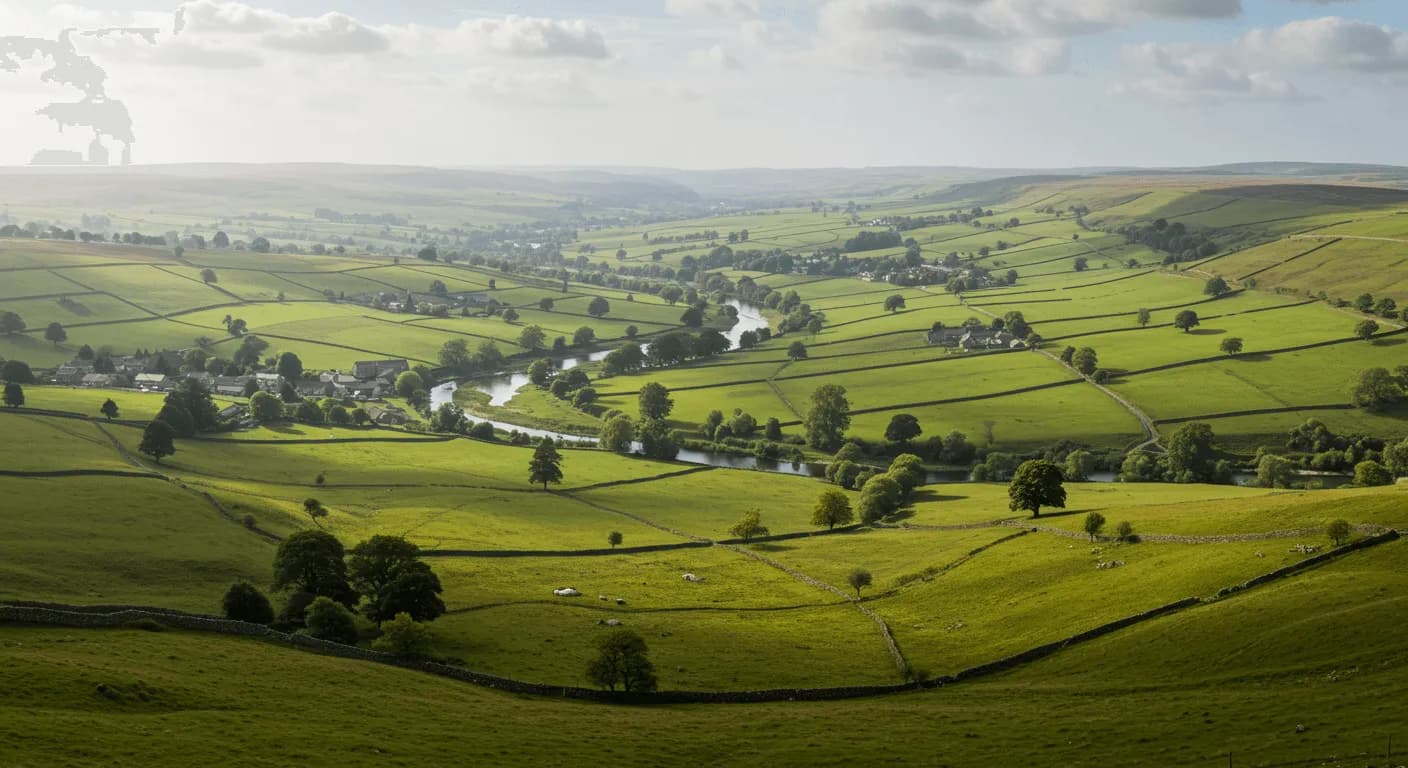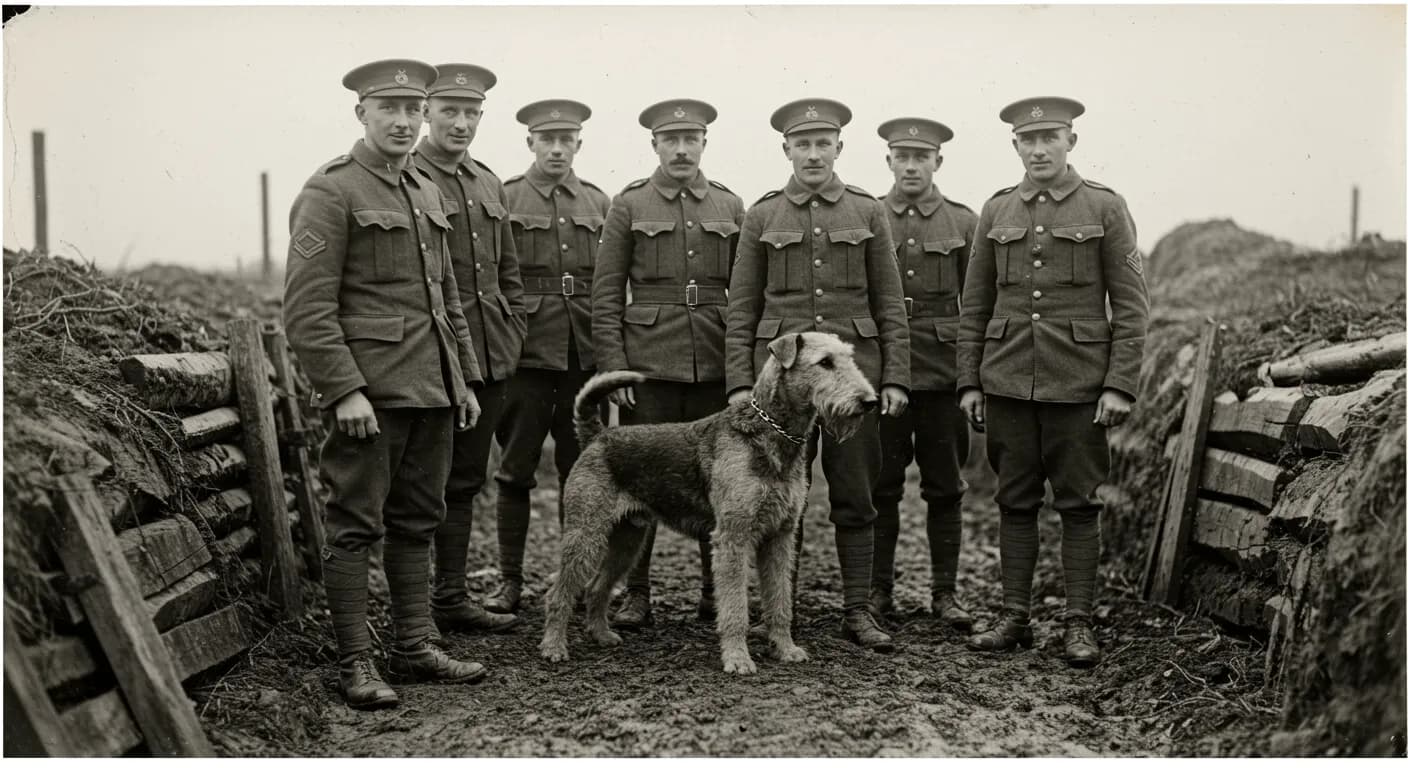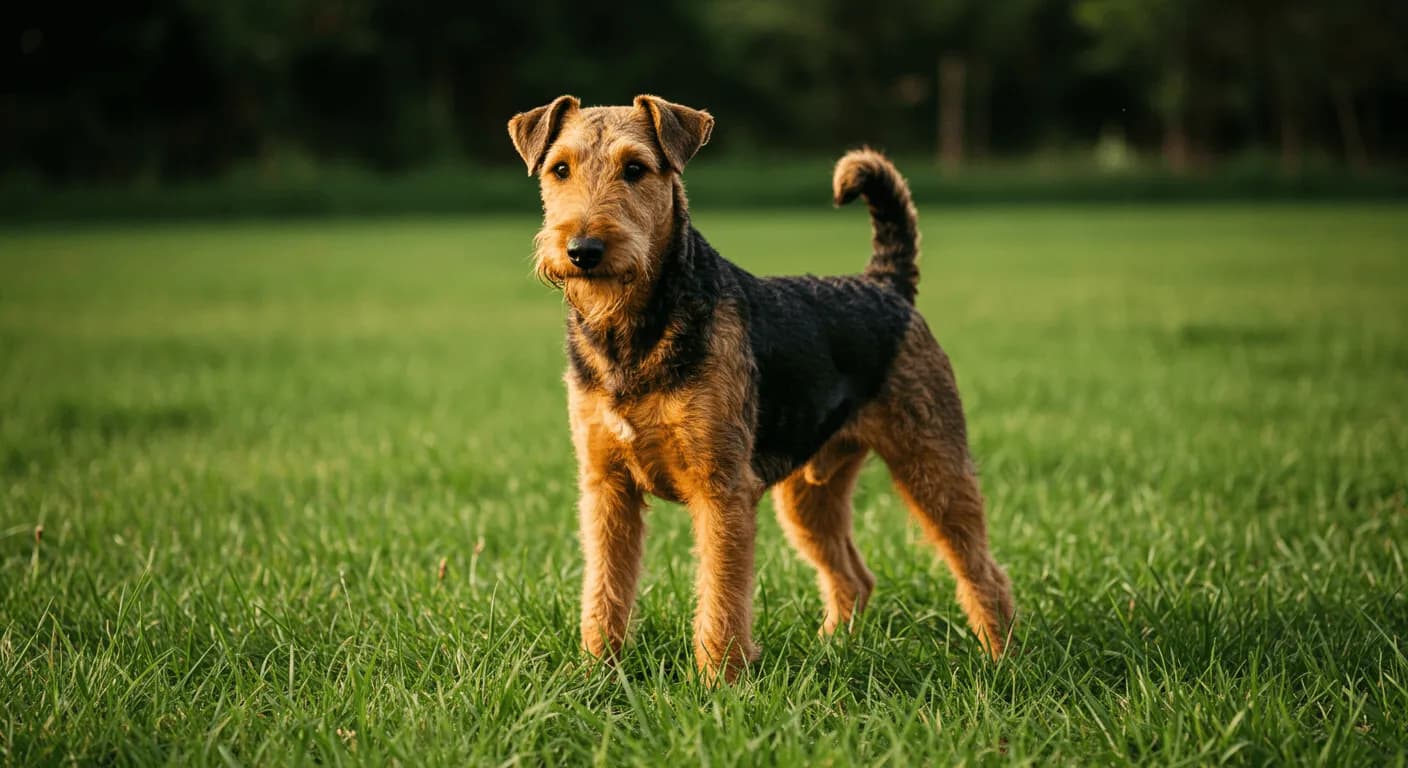Airedale Terriers are often referred to as the "King of Terriers," and for good reason. With their commanding presence, intelligent eyes, and rich heritage, Airedales have captured the attention of dog enthusiasts and historians alike. This article explores the complete story behind the Airedale Terrier—its place of origin, historical roles, genetic ancestry, and its lasting influence on both the canine world and human society.
We’ll uncover key moments in the breed’s development, such as when the Airedale Terrier was first bred, how its name originated, the environment and culture that shaped it, and what historical functions the breed was designed to perform.
The Airedale Terrier History and Origin
The Airedale Terrier’s history and origin begin in the Aire Valley of Yorkshire, England, during the mid-19th century. This breed is a product of the industrial revolution era, developed by working-class breeders who wanted a versatile and resilient terrier capable of both hunting waterfowl and controlling vermin. These breeders crossed the now-extinct Otterhound, Welsh Terrier, and various other hunting and working breeds to create a single, adaptable dog: the Early Waterside Terrier, which would eventually become the Airedale Terrier.
Earliest Known Ancestors and Development Conditions
The Airedale’s earliest known ancestors include:
- Otterhound – contributed water-resistant coat and strong swimming abilities
- Black and Tan Terrier – provided tenacity and ratting capabilities
- Bull Terrier and Irish Terrier – refined the breed’s form and temperament
The genetic lineage of the Airedale Terrier emerged from a deep pool of terrier stock combined with scent and water-dog characteristics. The hybrid vigor produced a breed adept in various roles, especially as a hunter, farm guardian, and family companion.
The prehistoric environmental context in Yorkshire contributed to the breed’s resilience. The River Aire and its surrounding marshlands demanded a sturdy dog that could swim, track, and tunnel effectively. This environment forged a hardy, agile, and trainable animal with high endurance—a breed suited to both rugged tasks and keen companionship.
Where the Airedale Terrier Came From
Where the Airedale Terrier came from is neither a mystery nor a matter of dispute: the breed hails from England, rooted specifically in the Aire Valley region. This part of Yorkshire, dotted with rivers, wetlands, and fertile fields, was ideal for cultivating working dogs—especially one that needed to thrive in both aquatic and terrestrial settings.
The original native landscape shaped the breed’s physical structure. Long legs for striding through thick brush and marshes, wiry coat for weather resistance, and a sturdy jaw for catching prey. These environmental needs played a critical role in how the Airedale Terrier was developed.
Local farmers and mill workers needed one dog that could do multiple jobs: guarding the home, hunting game, and killing rats. Their socio-economic status didn’t allow for multiple specialty dogs, so they bred towards all-in-one efficiency. This economic practicality led to the creation of a terrier unlike any other.
When the Airedale Terrier Was First Bred
The Airedale Terrier was first bred in the mid-1800s, around the 1850s to 1870s. Initially known as the Waterside Terrier or Bingley Terrier, the breed gained recognition at local dog shows in the early 1880s. By 1886, The Kennel Club (UK) officially recognized the breed under the name "Airedale Terrier."
Their formal presentation brought newfound popularity, especially in upper-class sporting circles. While still valued for their hunting prowess and utility, their intelligence and looks earned them a respectable place in more genteel households.
What the Airedale Terrier Was Bred For
One of the most central questions in the breed’s historical narrative is: What was the Airedale Terrier bred for?
Originally, the Airedale Terrier was bred as a multipurpose working dog. Its primary duties included:
- Hunting otters and water rats in the rivers of Yorkshire
- Controlling vermin populations on farms and mills
- Serving as a companion and guard dog
- Participating in competitive showing, obedience trials, and even police and military work

The breed soon gained a reputation as a 'three-in-one' dog – capable of hunting, protecting, and socializing. Their scenting abilities and willingness to follow prey into water rivaled some of the finest scent hounds, while their fearlessness and grit made them stand out among terriers.
Unsurprisingly, the British military used Airedales as messengers and sentries during World War I, further expanding their historical purpose.
Airedale Terrier Bloodlines History
The Airedale Terrier's bloodlines history has always been a complex tapestry of selective breeding. Initially unregulated, early breeders mixed them with otterhounds and other terriers to create a balance of water-work and stamina with aggression for ratting tasks.
In the early 20th century, dedicated breed enthusiasts such as Colonel Edwin Richardson refined the breed for military use—emphasizing courage, loyalty, and trainability.
Important bloodline contributors include:
- Champion Master Briar: One of the breed’s earliest show winners and a key stud dog whose descendants helped define the Airedale’s look.
- Ch. Warland Ditto: Marked as a distinguished Airedale used widely for conformation and character breeding.
- Richardson's War Dogs: Airedales bred under military breeding programs for signal-carrying and patrol duties.
These foundation lines helped establish the breed’s global standard and seeded kennels worldwide as the breed expanded into the U.S., Canada, and beyond.
How the Airedale Terrier Got Its Name
An essential part of its story is how the Airedale Terrier got its name.
The breed was originally termed the Waterside Terrier, in reference to its aquatic hunting abilities near rivers. However, as dog shows began segregating breeds more formally in the late 19th century, the need arose to distinguish this unique breed from others.
The name “Airedale” is derived from:
- “Aire”: Referring to the River Aire that runs through Yorkshire
- “Dale”: The old English word for valley
Thus, the etymology of the breed’s name carries a geographic and symbolic weight, signifying the breed as the "Terrier of the Aire Valley." The practice of naming by region also mirrored other popular British breeds—such as the Bedlington or Dandie Dinmont.

When the Airedale Terrier Came to America
Like many British breeds, the Airedale Terrier made its way to the United States in the early 20th century. The Airedale Terrier came to America around the 1880s, gaining substantial popularity by the 1920s.
In particular, President Warren G. Harding owned an Airedale named Laddie Boy, creating a national sensation around the breed. Stories of the breed’s performance in wartime and outstanding loyalty further fueled public admiration.
By the 1940s, the Airedale was one of the most popular dog breeds in the United States. While their popularity has slightly declined in show rings, their influence remains strong.
Historical Impact and Legacy
The historical contributions of the Airedale Terrier to society are remarkable and span multiple sectors. These include:
- Military Communications: Airedales worked as wartime message carriers under heavy fire.
- Law Enforcement: Early police departments used Airedales for scent tracking and apprehensions.
- Emotional Companionship: Their loyal, gentle temperament saw them function as therapy dogs long before the concept became formalized.
- Pop Culture: Appearances in literature, films, and presidential circles helped etch their image into the public's imagination.

As a result of these contributions, the breed holds the distinction of being among the most versatile terriers in documented history.
Key Milestones in Airedale Terrier Development (Ordered List)
- Mid-1800s – Origination in Yorkshire, England near the River Aire
- 1880 – Recognition at British dog shows begins
- 1886 – Official acknowledgment by The Kennel Club; named Airedale Terrier
- Early 1900s – Imported into the United States
- 1914-1918 – Used extensively in World War I by British forces
- 1920s – Becomes a cultural icon in America under President Harding
- Mid-20th Century – Established as a family and utility breed across continents
Traits Amplified by Historical Purpose (Unordered List)
- Exceptional scent tracking ability
- Highly trainable with strong memory retention
- Tenacious and courageous in dangerous environments
- Keen swimmer with waterproof coat
- Strong watchdog instincts with affectionate loyalty
The lasting traits of the Airedale Terrier are directly tied to its past roles: utility, adaptability, and bravery. Today, they remain a beloved, if underappreciated, breed with a fan base among both working-dog purists and family pet lovers.
Their unique combination of dynamics—and the rich story of where the Airedale Terrier came from—demonstrates the power of human purpose in shaping canine companions. Whether in the hills of Yorkshire, trenches of war, or living rooms around the world, the Airedale Terrier continues to carry forward its nobility and grit born from rich history.## Conclusion
The story of the Airedale Terrier is one of resilience, versatility, and enduring legacy. From its humble beginnings in the Aire Valley of Yorkshire to its prestigious role on the global stage, the Airedale has proven itself as a uniquely capable and loyal breed. Its journey through history—marked by innovation in breeding, adaptation to diverse roles, and deep-rooted connections to both working-class communities and world leaders—demonstrates the incredible bond between humans and dogs.
Whether admired for its historical accomplishments, impressive working abilities, or loving personality, the Airedale Terrier remains much more than just the “King of Terriers.” It is a testament to thoughtful breeding, purpose-driven development, and the remarkable impact one breed can have across generations. For those who appreciate intelligence, courage, and a spirited heart, the Airedale Terrier stands proudly as a symbol of canine excellence through history.

